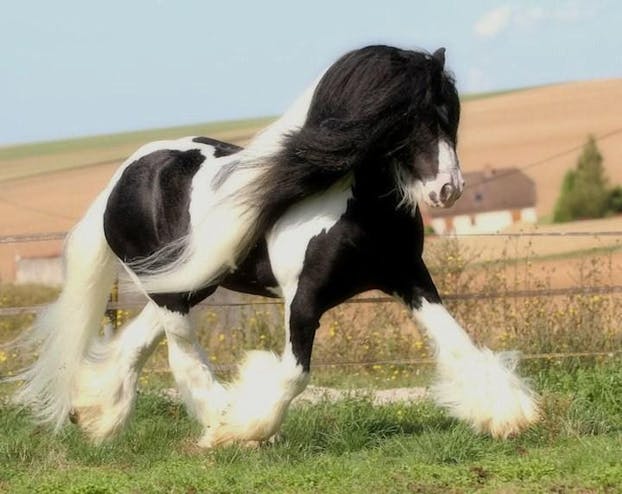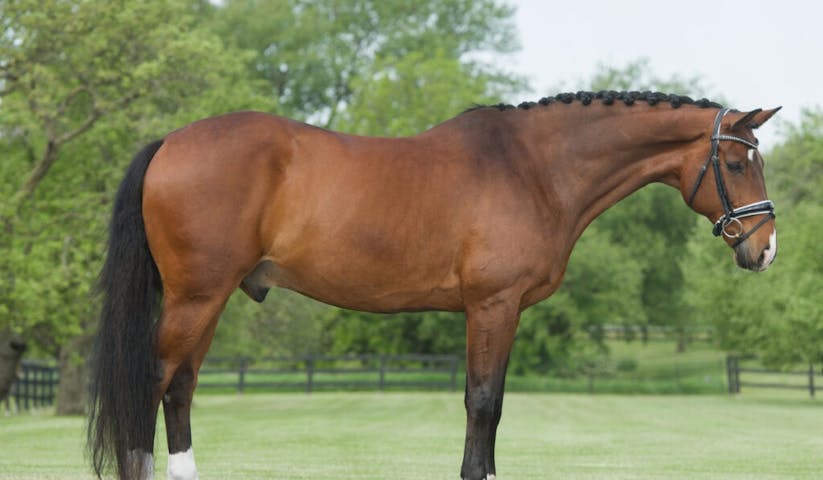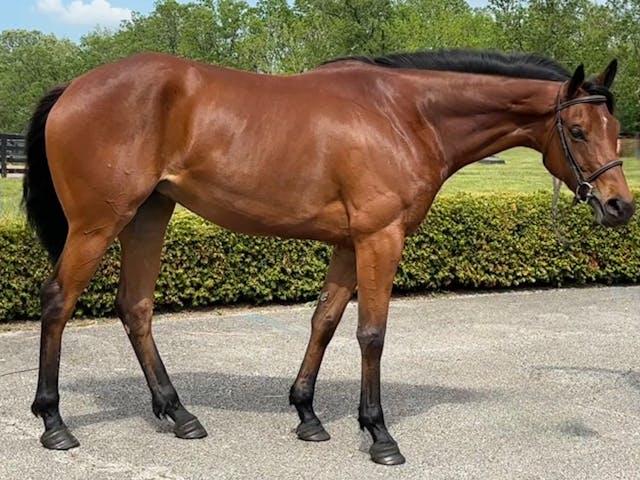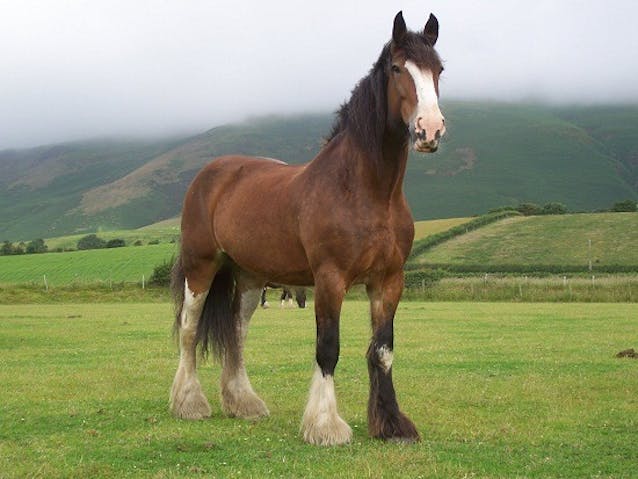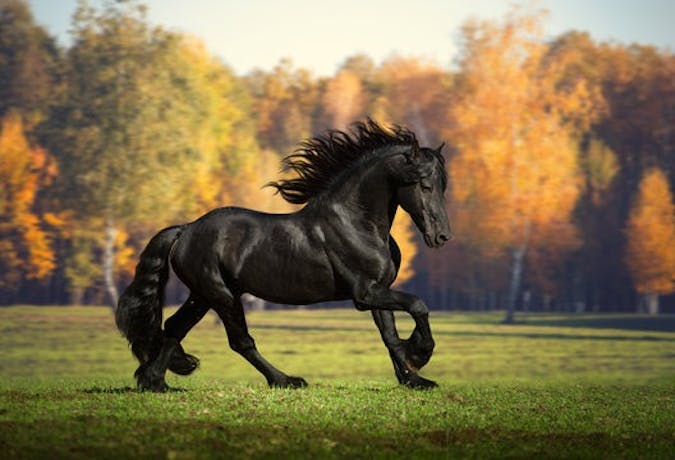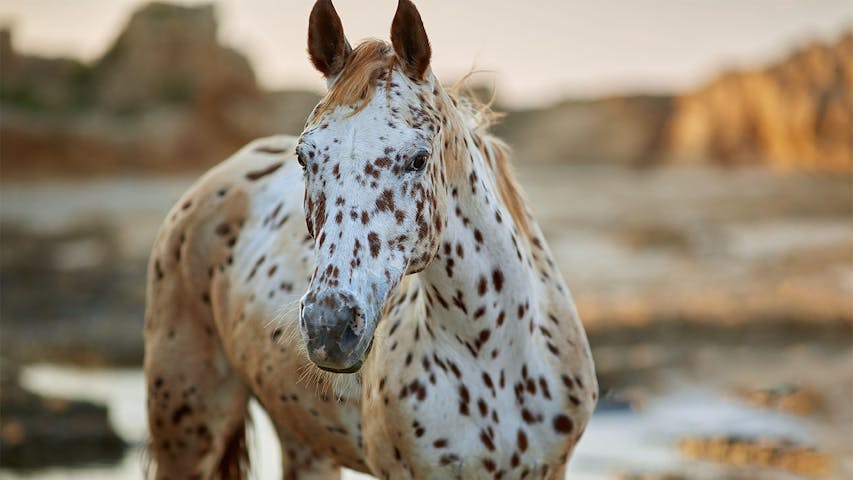An insight into the different type of horse breeds!
cob:
The term "cob" is often used in the context of horse breeds, and it generally refers to a type of sturdy, compact horse with a relatively short stature. Cobs are known for their strength, versatility, and calm temperament. They are often used for various equestrian activities, including riding, driving, and light draft work. Here are a few specific breeds that fall under the category of cobs
Cob (or Gypsy Vanner):
Origin: united Kingdom, particularly associated with the Romani people
Characteristics: Compact, muscular build, abundant feathering on the lower legs, a profuse mane and tail. Gypsy Vanners are known for their calm demeanor and are often used as family horses or in driving.
Irish Cob (or Traditional Irish Cob):
Origin: Ireland
Characteristics: Sturdy build, strong limbs, often with abundant feathering on the lower legs. They are known for their versatility and are used in various equestrian activities
warmblood:
Warmbloods are a group of horse breeds that are characterised by a combination of qualities from both light and heavy horse breeds. They are known for their athleticism, versatility, and calm temperament. Warmbloods are often used in various equestrian disciplines, including dressage, show jumping, eventing, and driving. Unlike specific breeds with a long history and strict breed standards, "warmblood" is more of a category that encompasses several breeds bred specifically for sport and competition
Origin:
Warmbloods originated in Europe, particularly in countries such as Germany, the Netherlands, Denmark, and Sweden.
The breeding of warmbloods began by crossing traditional heavy draft horses with lighter, more agile horses to produce a horse with qualities suitable for sport and riding.
Characteristics:
Warmbloods typically exhibit a balanced and athletic build, combining strength and agility.
They have well-muscled bodies, a strong and arched neck, and powerful hindquarters.
Warmbloods come in various colours, although solid colours are often preferred in some disciplines.
Temperament:
Warmbloods are known for their even temperament and trainable nature.
They are often praised for their willingness to work and their calm disposition, making them suitable for amateur riders as well as professional competitors.
Disciplines:
Warmbloods excel in a range of equestrian sports, including dressage, show jumping, eventing, and driving.
Their versatility allows them to be competitive in different disciplines, and they are often seen at the highest levels of international competition.
Breeds:
Various warmblood breeds exist, each with its own specific characteristics. Some well-known warmblood breeds include the Hanoverian, Holsteiner, Dutch Warmblood, Swedish Warmblood, Oldenburg, and Trakehner, among others.
Many warmblood registries have specific breeding standards to ensure the quality and consistency of the breed.
Warmbloods have become highly sought after in the world of equestrian sports due to their combination of athleticism, temperament, and versatility. They are often used in breeding programs to produce horses with the qualities needed for success in competitive riding disciplines.
Irish sports horse:
The term "Irish Sport Horse" refers to a versatile and athletic horse breed that is specifically bred for equestrian sports. It is not a distinct breed on its own but rather a type of horse that results from crossing Thoroughbred and Irish Draught bloodlines. The Irish Sport Horse is known for its excellent temperament, athleticism, and adaptability, making it suitable for a wide range of equestrian disciplines. Here are some key points about the Irish Sport Horse
Breed Origins:
The Irish Sport Horse originated in Ireland, where breeders aimed to combine the speed and agility of the Thoroughbred with the strength and substance of the Irish Draught.
Thoroughbred Influence:
Thoroughbred bloodlines are often incorporated to enhance the Irish Sport Horse's athleticism, speed, and endurance. Thoroughbreds are renowned for their success in racing, and their infusion adds a competitive edge to the Irish Sport Horse.
Irish Draught Influence:
The Irish Draught, a native Irish breed known for its strength and versatility, contributes substance, bone, and a calm temperament to the Irish Sport Horse.
Versatility:
Irish Sport Horses are highly versatile and can excel in various equestrian disciplines, including show jumping, dressage, eventing, and hunting.
Their adaptability makes them suitable for riders of different skill levels, from amateurs to professional competitors.
Physical Characteristics:
The Irish Sport Horse typically exhibits a balanced and athletic conformation.
They have a refined head, a strong neck, a well-muscled body, and strong limbs.
The height can vary, but they are generally of a medium to large build.
Temperament:
Irish Sport Horses are known for their excellent temperament, combining the spirit and responsiveness of the Thoroughbred with the calm and sensible nature of the Irish Draught.
Success in International Competition:
Irish Sport Horses have achieved significant success in international equestrian competitions, particularly in disciplines such as eventing and show jumping.
Breeding Standards:
The Irish Sport Horse is often registered with the Horse Sport Ireland (HSI), which sets breeding standards and oversees the development of the breed.
Irish Sport Horses are highly sought after in the equestrian world, and their versatility, soundness, and trainable nature contribute to their popularity among riders participating in a variety of disciplines. Breeders continue to refine the breed to maintain its exceptional qualities.
Thoroughbred:
The Thoroughbred is a distinct and influential horse breed known for its speed, agility, and competitive spirit. It is primarily bred for horse racing, but Thoroughbreds are also involved in various equestrian disciplines, including show jumping, dressage, and eventing. Here are some key characteristics and information about the Thoroughbred breed:
Origin:
The Thoroughbred breed originated in 17th-century England through the careful crossing of three foundation sires: the Byerley Turk, the Darley Arabian, and the Godolphin Arabian.
Purpose:
Thoroughbreds are primarily bred for horse racing, where their speed and stamina are highly valued. The breed is associated with flat racing, steeplechase, and other forms of horse racing.
Physical Characteristics:
Thoroughbreds are known for their refined and elegant appearance.
They typically have a slim, athletic build, a well-arched neck, and a long, sloping shoulder.
Their legs are long and slim, and they have well-defined muscles for speed.
Height and Colour:
Thoroughbreds are generally tall, with an average height ranging from 15.2 to 17 hands.
Coat colours can vary, including bay, chestnut, black, and gray. Gray is a common coat colour that may develop with age.
Temperament:
Thoroughbreds are known for their high energy and spirited nature.
They are intelligent and often exhibit a strong desire to run and compete.
Racing Careers:
Thoroughbreds usually begin their training as racehorses at a young age, typically around two years old.
Many Thoroughbreds have successful racing careers, while others may transition to second careers in disciplines like show jumping, dressage, or eventing after their racing days are over.
Bloodlines and Pedigree:
Thoroughbreds' pedigrees are meticulously tracked, and bloodlines are crucial in determining potential racing success.
Successful Thoroughbreds often have influential sires and dams in their lineage.
International Influence:
The Thoroughbred breed has had a significant impact on horse racing and breeding worldwide. Thoroughbreds are found in racing industries across North America, Europe, Asia, and beyond.
Stud Books:
Thoroughbreds are registered in stud books maintained by various organisations, such as The Jockey Club in the United States, Weatherby's in the United Kingdom, and others in different countries.
The Thoroughbred's exceptional speed and athleticism have made it a dominant force in the world of horse racing. Their influence extends beyond the track, as they contribute to the development of other horse breeds and participate in a variety of equestrian sports.
Clydesdale:
The Clydesdale is a breed of draft horse known for its large size, strength, and distinctive appearance. These horses have a long history and are often recognised for their use in heavy farm and industrial work. Here's some information about the Clydesdale breed:
Origin:
The Clydesdale breed originated in Scotland, specifically in the region of Lanarkshire along the River Clyde, which is how the breed got its name.
History:
The breed's development can be traced back to the 18th century when local farmers in Scotland selectively bred large, strong horses for agricultural and industrial tasks.
Physical Characteristics:
Clydesdales are large horses with a well-muscled and broad body.
They have a distinctive appearance, often with a bay coat colour, white markings on the face and legs, and extensive feathering (long hair) on the lower legs.
Size:
Clydesdales are among the tallest and heaviest horse breeds. They typically stand between 16 to 18 hands (64 to 72 inches or 163 to 183 cm) at the withers and can weigh over 2,000 pounds (907 kg).
Feathering:
One of the notable features of Clydesdales is the feathering on their lower legs, which refers to the long hair around the fetlocks. This feathering is more pronounced than in some other draft horse breeds.
Temperament:
Clydesdales are known for their calm and gentle temperament, making them suitable for work and companionship. They are often described as easygoing and willing to cooperate.
Use:
Traditionally, Clydesdales were employed for heavy draft work on farms, pulling plows and other equipment. They were also used in industrial settings to haul heavy loads.
In modern times, while they are still used in agriculture, Clydesdales are also popular as show and exhibition horses. Some are used in promotional and advertising campaigns, especially by breweries.
Popularity:
The Clydesdale breed gained international recognition and popularity, particularly through the Budweiser Clydesdales, a team of Clydesdale horses used in promotional events by the Anheuser-Busch brewing company.
Conservation:
Due to their historical significance and unique characteristics, efforts are made to conserve and preserve the Clydesdale breed.
Clydesdales are admired not only for their strength and utility but also for their striking appearance. They continue to be appreciated in various capacities, from traditional agricultural work to parades, shows, and promotional events.
shires:
The Shire is a breed of draft horse that originated in England, and it is known for its immense size, strength, and gentle temperament. Here is some information about the Shire breed:
Origin:
The Shire horse originated in England in the medieval era. It was developed in the Shire counties of England, including Derbyshire, Leicestershire, and Staffordshire.
History:
The Shire was initially bred for heavy farm and industrial work, including pulling plows and carts. It played a significant role in the development of medieval England.
Physical Characteristics:
Shire horses are among the largest horse breeds. They have a powerful and muscular build with a broad chest, strong shoulders, and sturdy legs.
The breed typically has a tall stature, standing between 16 to 19 hands (64 to 76 inches or 163 to 193 cm) at the withers.
Coat Colors:
Shires come in a variety of coat colours, including black, bay, brown, and grey. White markings on the face and legs are common.
Feathering:
One of the distinctive features of Shire horses is the feathering on their lower legs. Feathering refers to the long hair around the fetlocks, which is more pronounced in Shires than in many other draft breeds.
Temperament:
Shire horses are known for their calm and gentle temperament. They are often described as docile, willing to work, and easy to handle.
Use:
Historically, Shire horses were used for a variety of heavy work tasks on farms and in industry, such as pulling plows, wagons, and other heavy equipment.
In modern times, Shires are also used in promotional events, parades, and exhibitions. They are appreciated for their majestic appearance and gentle nature.
Popularity:
While the Shire breed's popularity declined with the mechanisation of agriculture, there has been a resurgence of interest in recent years. Efforts are made to preserve and promote the breed, both for its historical significance and its qualities as a working and show horse.
Conservation:
Conservation efforts are underway to ensure the survival of the Shire breed, and breed organisations work to maintain breed standards and genetic diversity.
The Shire horse, with its massive size and kind temperament, holds a special place in the history of draft horse breeds. While their traditional roles have evolved, they are still celebrated for their strength, versatility, and contribution to agriculture and industry.
Friesian:
The Friesian horse is a distinct and striking breed known for its elegant appearance, luxurious mane and tail, and versatile use. Originating in the Friesland region of the Netherlands, Friesians have a long and storied history. Here are some key characteristics and information about the Friesian breed:
Origin:
Friesians hail from the province of Friesland in the northern Netherlands. They are one of the oldest horse breeds in Europe, with a history that dates back several centuries.
Physical Characteristics:
Friesians are known for their distinctive appearance, characterised by a well-arched neck, a powerful and muscular build, and a luxurious, flowing mane and tail.
They have a strong, compact body with a well-defined, sloping shoulder and a high-set tail.
Colour:
Friesians are typically black in colour, with a solid black coat being the most desirable. White markings are rare but can occur on the forehead or lower legs.
Feathering:
While Friesians do not have the extensive feathering found in some draft breeds, they have moderate feathering on their lower legs, particularly around the fetlocks.
Mane and Tail:
One of the standout features of Friesians is their long, flowing mane and tail. The mane is often thick and wavy, and the tail is set low and falls to the ground.
Height:
Friesians are generally tall horses, with an average height ranging from 15.2 to 17 hands (61 to 68 inches or 155 to 173 cm) at the withers.
Temperament:
Friesians are known for their gentle and friendly nature. They are often described as willing, intelligent, and eager to please, making them suitable for various equestrian activities.
Versatility:
Originally bred as carriage horses and war horses, Friesians are versatile and can excel in various disciplines. They are often seen in dressage, driving, and competitive carriage events.
Their elegant and regal appearance also makes them popular choices for ceremonial and promotional events.
Use in Film and Media:
Friesians have gained international recognition and popularity due, in part, to their appearances in films and television shows. Their striking appearance often makes them sought after for dramatic and historical roles.
Breeding and Associations:
Friesians are registered with various breed associations, with the Friesian Horse Studbook (FPS) in the Netherlands being one of the primary organisations responsible for maintaining breed standards.
Friesians are cherished for their beauty, versatility, and amiable disposition. Whether in the show ring, on the dressage arena, or in the spotlight of media productions, Friesian horses continue to captivate enthusiasts around the world.
Shetland Pony:
Shetland ponies are a small, hardy breed of pony originating from the Shetland Isles, which are located off the northeast coast of Scotland. Known for their compact size, strength, and friendly disposition, Shetland ponies have become popular worldwide as both companion animals and versatile working or riding ponies. Here is some information about Shetland ponies:
Size:
Shetland ponies are known for their small size, with a maximum height of 10.2 hands (42 inches or 107 cm) at the withers. Despite their diminutive stature, they are strong and sturdy.
Build:
Shetland ponies have a compact and well-muscled build, with a short back, thick neck, and a full mane and tail. Their legs are short and sturdy.
Coat Colours:
Shetland ponies come in various coat colours, including black, bay, chestnut, grey, and roan. They can also have white markings on their face and legs.
Mane and Tail:
Shetland ponies are known for their thick, luxurious manes and tails, which often require grooming to prevent tangling.
Temperament:
Shetland ponies are generally known for their friendly and intelligent nature. They can form strong bonds with their owners and are often good with children.
However, like any horse or pony breed, individual temperament can vary, and proper training and handling are essential.
Versatility:
Shetland ponies are versatile and can be used for various activities. They are commonly used in driving competitions, as well as for riding, especially by children.
Their small size makes them suitable for therapy work and as companion animals.
History:
The Shetland pony has a long history, with its origins dating back to the Bronze Age. The breed developed in the challenging conditions of the Shetland Isles, leading to their hardiness and adaptability.
Uses:
Shetland ponies were historically used for various tasks on the Shetland Isles, such as pulling carts, working in mines, and carrying peat.
Today, they are popular as children's riding ponies, in driving competitions, and as pets.
Health and Longevity:
Shetland ponies are generally hardy and have a long lifespan. With proper care, they can live well into their 20s and even beyond.
Conservation Efforts:
While Shetland ponies are no longer used for traditional tasks in their native islands, efforts are made to preserve and protect the breed. Conservation programs help maintain genetic diversity and promote the welfare of Shetland ponies.
Shetland ponies are beloved for their small size, friendly demeanor, and versatility. They are suitable for various activities and are often adored as family pets, especially in settings where space is limited.
Appaloosa:
The Appaloosa is a distinctive and versatile horse breed known for its colourful coat patterns, unique markings, and friendly disposition. Native to the United States, the Appaloosa has a rich history and is recognised for its excellence in various equestrian activities. Here is some information about the Appaloosa breed:
Origin:
The Appaloosa breed has Native American roots, with its ancestors believed to have been selectively bred by the Nez Perce tribe in the Pacific Northwest.
Distinctive Coat Patterns:
One of the most defining features of Appaloosas is their coat patterns, which include distinctive spots, speckles, roaning, and blankets. Common patterns include leopard, blanket, snowflake, and marble.
Characteristics:
Appaloosas have a medium to compact build with a well-muscled body. They typically stand between 14 to 16 hands (56 to 64 inches or 142 to 163 cm) at the withers.
The breed is known for its distinctive head with a broad forehead, a straight or slightly convex profile, and mottled skin around the eyes and muzzle.
Colour Variety:
Appaloosas come in a variety of base coat colours, including bay, chestnut, black, palomino, buckskin, and more. Their coat patterns can be highly varied, making each individual unique.
Mane and Tail:
The mane and tail of an Appaloosa can be of a different colour than the coat, and they often exhibit a mix of colours or may be solid.
Versatility:
Appaloosas are highly versatile and excel in various disciplines. They are commonly seen in Western riding events, including trail riding, cutting, reining, and barrel racing.
They are also successful in English disciplines such as dressage, show jumping, and eventing.
Temperament:
Appaloosas are known for their calm and gentle temperament. They are generally easy to handle and work with, making them suitable for riders of different skill levels.
Use in Native American Culture:
The Nez Perce tribe highly valued their Appaloosas, and these horses played a significant role in their culture, particularly during the 19th century.
Registration and Organizations:
The Appaloosa Horse Club (ApHC) is the primary registry and organisation for Appaloosa horses. The ApHC sets breed standards and promotes the breed's versatility.
Sport horse Qualities:
Appaloosas are known for their athleticism, and many individuals have excelled in sport horse disciplines. They can be found participating in dressage, show jumping, and other English riding events.
Appaloosas are celebrated not only for their striking coat patterns but also for their versatility, intelligence, and friendly nature. They have become popular worldwide and are valued for their contributions to various equestrian activities.
Arabian
welsh A,B,C,D
